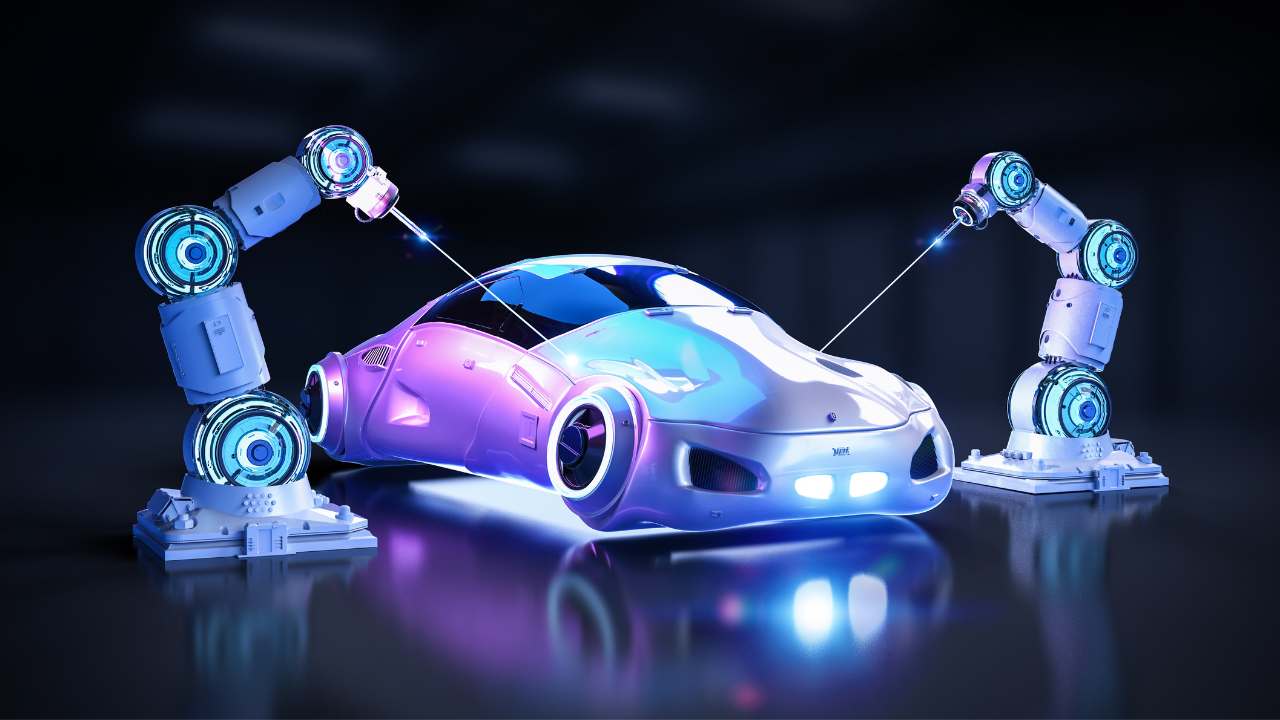The world of work is changing fast, thanks to robotics and automation. These technologies are making big changes in how we work. They bring together smart machines, Robotics and Automation to change jobs and skills needed.
We’re seeing more industrial robots and smart factories. Also, robotic process automation and working with machines are becoming common. This mix of tech and work is making things more complex.
This article will look at how technology is changing work. We’ll see how it’s changing jobs, skills, and the future of work. We’ll talk about the good and bad sides of automation and robotics. And we’ll find out what skills people need to do well in this new world.
Key Takeaways
- Robotics and automation are reshaping the future of work, redefining job requirements and skills needed.
- The rise of intelligent machines, AI, and advanced automation technologies are transforming industries and workplaces.
- Robotic process automation is driving efficiency and productivity in various sectors.
- Human-machine collaboration is becoming essential for navigating the changing workforce landscape.
- Upskilling and reskilling the workforce is crucial for adapting to the evolving demands of the job market.
Embracing the Age of Automation
We’re seeing big changes in work, thanks to fast growth in industrial robots, artificial intelligence, and automation technology. These new technologies are making smart machines and smart factories a reality. They’re changing how industries and workplaces work all over the world. Now, automated systems, machine learning, and autonomous systems are key to the future.
The Rise of Intelligent Machines
Industrial robots and collaborative robots are leading this change. They’re getting smarter and more flexible. With artificial intelligence and machine learning, they can do complex tasks fast and accurately. This is changing how we use industrial automation and smart manufacturing.
Transforming Industries and Workplaces
Adding automation technologies and human-robot interaction is changing many industries. This includes manufacturing, healthcare, and logistics. The idea of Industry 4.0 and smart factories brings a new era. Now, machine learning applications and autonomous systems work with humans. This makes workplace automation more efficient and productive.
| Industry | Automation Advancements | Key Benefits |
|---|---|---|
| Manufacturing | Robotic assembly lines, predictive maintenance, automated quality control | Increased efficiency, reduced errors, and higher product quality |
| Healthcare | Automated drug dispensing, robotic surgery, remote patient monitoring | Improved patient outcomes, reduced medical errors, and increased access to care |
| Logistics | Automated warehouse management, autonomous delivery vehicles, AI-powered route optimization | Faster delivery times, reduced operational costs, and improved supply chain visibility |
As we move into the age of automation, we need to handle the challenges and chances it brings. We should make sure the good parts of industrial robots, artificial intelligence, and automated manufacturing make life better and support sustainable progress.
Understanding Robotic Process Automation
Robotic process automation (RPA) is changing the way we work. It makes routine tasks more efficient. This technology helps businesses work better in many industries.
RPA uses smart software bots to do repetitive tasks. This lets people focus on important work. It automates tasks like data entry and customer service, making things faster and more accurate.
RPA fits well with what businesses already use. It can start working quickly, with little disruption. This means companies can see the benefits of automation fast.
As RPA grows, the role of workers will change. They won’t be replaced by machines. Instead, they’ll do more strategic and creative work. Bots will handle the repetitive tasks.
“Robotic process automation is revolutionizing the way we work, freeing up human potential and driving transformative change in the workplace.”
Adding AI and machine learning to RPA makes workflows even better. This opens up new ways to improve business and serve customers better.
RPA is not just a tool. It’s a way to make businesses more efficient and competitive. It helps unlock new levels of productivity.
Robotics and Automation: The Future of Work
Looking ahead, robotics and automation will greatly change the workforce. They automate simple tasks, letting people do more complex work that needs their skills and creativity.
Automating Repetitive Tasks
Now, automated systems and workflows are common in many fields, from making goods to helping customers. They make tasks less time-consuming, cut down on mistakes, and let workers focus on big projects and solving problems.
Enhancing Efficiency and Productivity
Automation is changing how we work with technologies like collaborative robots (cobots) and working together with humans. These systems work well with people, making things more efficient and productive. By using the best of both humans and machines, companies can do more, make better products, and save money.
As we move into this new era, it’s clear that humans and machines will work together more closely. By using these new technologies, we can do more, innovate more, and grow, making work better and more rewarding for everyone.
“Automation is not about replacing humans, but about augmenting their capabilities and allowing them to focus on more meaningful work.”
The Impact on the Workforce
The use of robotics and automation in the workplace is changing fast. It’s making us think about the future of jobs. Technological unemployment and job displacement are big concerns as machines start doing jobs once done by people.
But, workforce transformation isn’t just about losing jobs. Human-robot interaction and human-robot collaboration open new chances for workers to grow. Experts say this change will create new jobs and industries. Workers will need new skills and knowledge.
Job Displacement or Job Evolution?
The debate on robotics and automation’s effect on jobs is deep and complex. Some jobs might disappear, but others could get better or change. Workers will need to learn new things and adapt to the workplace transformation. The key is to keep up with new skills and training, so workers can do well in an automated world.
- Look at the risks of job displacement and the need for workforce transformation.
- See the chances for human-robot interaction and human-robot collaboration in the changing work world.
- Highlight the importance of adjusting to the workplace transformation with new skills and training.
“The future of work is not about replacing humans with machines, but about empowering humans to work alongside machines in a more efficient and productive manner.”
Upskilling and Reskilling for the Future
The world of work is changing fast, thanks to new tech like robotics and automation. It’s key for workers to learn new skills to keep up. This means getting new abilities to fit with tech changes and staying ahead in the job market.
Automation and AI are changing job roles, which can be scary. But, we think investing in our skills can help us stay on top. By getting training and learning new things, we can keep our skills useful in a changing job world.
Working with robots will be big in the future job scene. By learning to work well with machines, we can do more, make more, and come up with new ideas. This will need us to think differently and learn new skills like solving problems, thinking critically, and being flexible.
FAQ
What are the key trends driving the rise of robotics and automation in the workplace?
We’re seeing big changes with smart machines and artificial intelligence. These changes are making industries and workplaces change. Things like industrial robots and smart factories are changing how we work. Trends like Industry 4.0 and robotic process automation (RPA) are also shaping the future of work.
How are smart factories and autonomous systems impacting the manufacturing industry?
Smart manufacturing is changing the game in the manufacturing world. We’re seeing more automation and use of machine learning. This leads to better efficiency, more production, and flexibility in making things.
What is robotic process automation (RPA), and how is it transforming the workplace?
RPA is a tech that automates simple, repetitive tasks in many industries. It makes workflows smoother, boosts efficiency, and helps with productivity. This means people can focus more on tasks that need a human touch.
How are robotics and automation impacting the future of work and the workforce?
Robotics and automation are changing the future of work and jobs. Some worry about job loss, but new jobs and industries are emerging. Workers need to keep learning new skills to stay ahead.
What are the key strategies for organizations and individuals to prepare for the future of work?
Getting ready for the future means learning new skills for the job. It’s about making workers ready for a world with more automation. Learning to work with machines, continuous learning, and being adaptable are key for both companies and workers.





